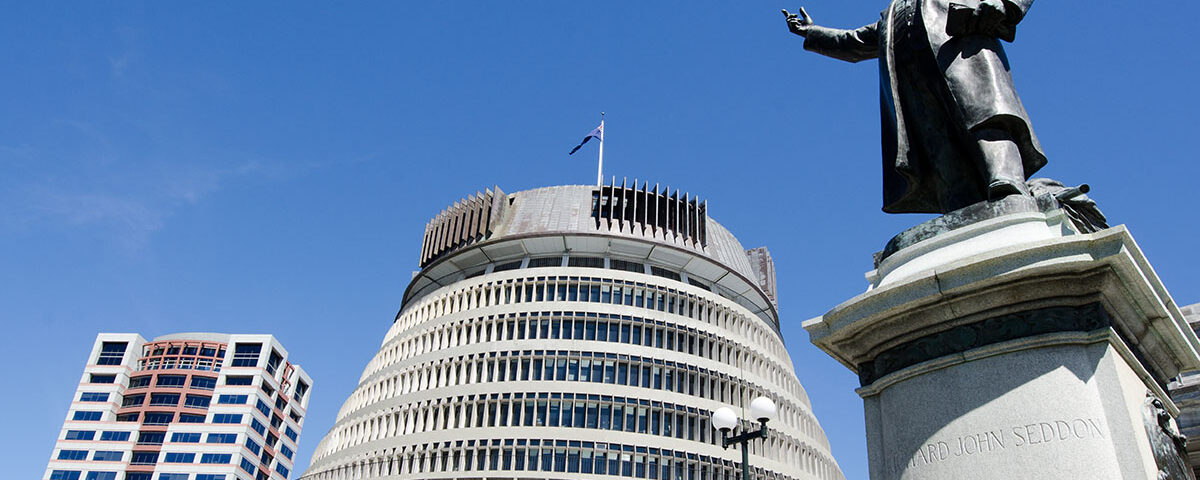
New Zealand Budget 2023 – No Frills? or Blow-out?
Budget 2023 has been dubbed as the “No Frills Budget” by the Government. The opposition are already dubbing it the “Blow-out Budget”.
Given that inflation is at levels unseen in New Zealand for a generation, the messaging around the 2023 Budget has been that it would be a “no frills” budget. In other words, the Government did not want this budget to be seen as the “lolly-scramble” that is typical for an election-year budget.
The amount of cash available for the Government splash around was further dented by the recent cyclones. Leading up to Budget Day, the Government had already announced that $1b would be spent on cyclone recovery and that these funds were reprioritised from other planned spending.
Spending
Forecasts leading up to the Budget 2023 estimated that there was headroom for an additional $5.5 billion in spending. This $5.5b is made up of a $4.5b increase in the “annual operating allowance” and from $4b in spending announced in prior budgets that has now been reprioritised across the next four years. Today’s Budget (including pre-announced spending) allocated $4.8b of that available annual spending.
Economic Update
While spending announcements generally get most of the attention on Budget Day, a budget is also about opening up the country’s books to see the state of our economy now, and, perhaps more importantly, projections of where the economy is heading.
So what do the books tell us?… Surprisingly, Treasury is now forecasting that New Zealand will avoid going into recession (albeit by a very fine margin). A surprise increase in net migration and the cyclone rebuild are helping support the economy.
While Treasury are not forecasting a recession, the return to surplus has been pushed out another year and unemployment is forecast to increase marginally to 5.3%.
Inflation is forecast to fall to 4.5% by the end of 2023 and then fall into the Reserve Bank target rate of 1-3% by the end of 2024. As a result of the slower than previously forecast decrease in inflation, interest rates will stay higher for longer.
Tax changes
In the weeks leading up to the Budget, the Government had already announced that there would be “no major new taxes”.
This led to the biggest surprise in the budget, with the announcement that the trust tax rate is being increased to match the top 39% tax rate from 1 April 2024. Make no mistake, this will affect and annoy a lot of people who are not high earners trying to avoid the top tax rate.
Also, as previously announced, the cuts to fuel taxes and road user charges are not being renewed in June.
Cost of living measures
There were a few surprise announcements aimed at easing cost of living increases.
- 20 ECE hours being extended to 2-year-olds, although not until March next year.
- Free public transport for under 13’s and half-price public transport for under-25s.
- $5 prescription charges are being scrapped from July.
These changes are relatively narrow but will be appreciated by those who do benefit.
WK Strawbrige’s take on Budget 2023
We were highly critical of the Government not reigning in spending in Budget 2022 when inflation was already a significant issue. The Government finally got the memo about inflation now that it has become the primary concern of the electorate, but it is fair to say that they were very late to the party. While the Government has talked a good game around bringing inflation under control, they really haven’t showed much constraint on new spending. I’m not convinced that Budget 2023 lives up to the “no frills” billing.
We think there was room to cut spending further to help rein in inflation. The country is borrowing billions of dollars per annum to maintain these levels of spending and core Government spending has increased by around 70% or $50b since the current Government came into power. However, if you wanted to look for a silver lining, maintaining spending at this level does help create a soft landing for the economy.
Of course, what we think isn’t important. What really matters in the short-to-medium-term is whether the Reserve Bank considers that the Government has showed enough spending restraint to help bring inflation back to acceptable levels as this will help shape monetary policy in the short-term. The next OCR announcement is the 24th of May so we will get an answer to that question very soon. Of course, Government spending is only a part of the inflation problem that the Reserve Bank is charged to fix. Ultimately, the Reserve Bank needs to see some heat come off the economy and, more importantly, see some evidence of a substantial weakening in the labour market so that wage inflation reduces. Overall, it doesn’t seem that today’s Budget is overly supportive of the Reserve Banks’ mandate to get inflation under control. Ultimately, while the Treasury is forecasting that New Zealand will not go into recession, it seems that Budget-2023 increases the odds that the Reserve Bank will have no option but to keep raising interest rates until the country is forced in recession.
Ultimately, Budget 2023 does little to help those struggling with the cost of living. Importantly, the removal of the reduction of fuel taxes and the fact that interest rates are going to go higher and stay higher for longer will hurt households and businesses. The narrow cost of living measures in the budget really are not going to help enough households. Of course, the Government has left at least a billion dollars in reserve, and further cost of living measures could be dangled out closer to the election.
Finally, the increase in the trust tax rate to 39% is an unnecessary move that impacts many thousands of middle earners. Like other changes this Government has made over the past few years, the main impact is unnecessary compliance costs.